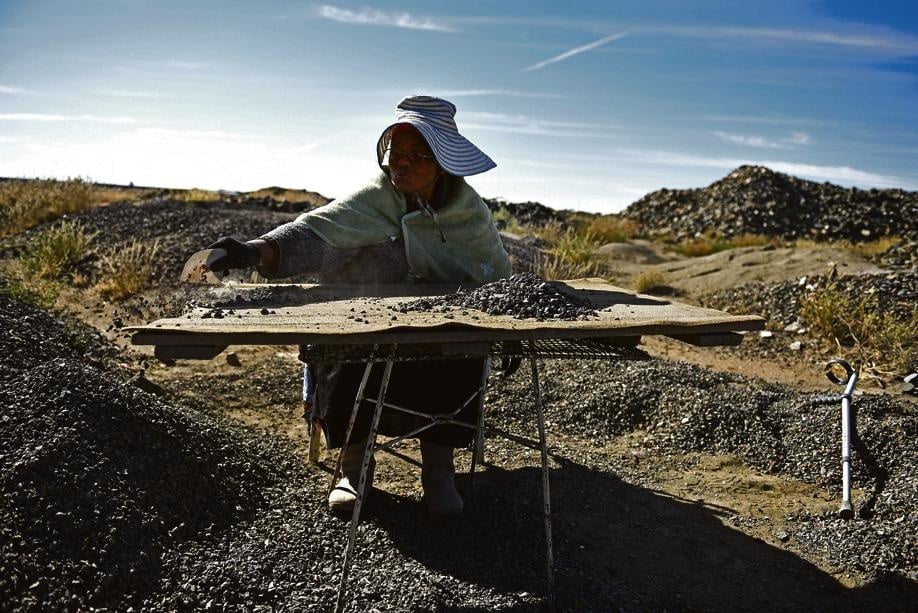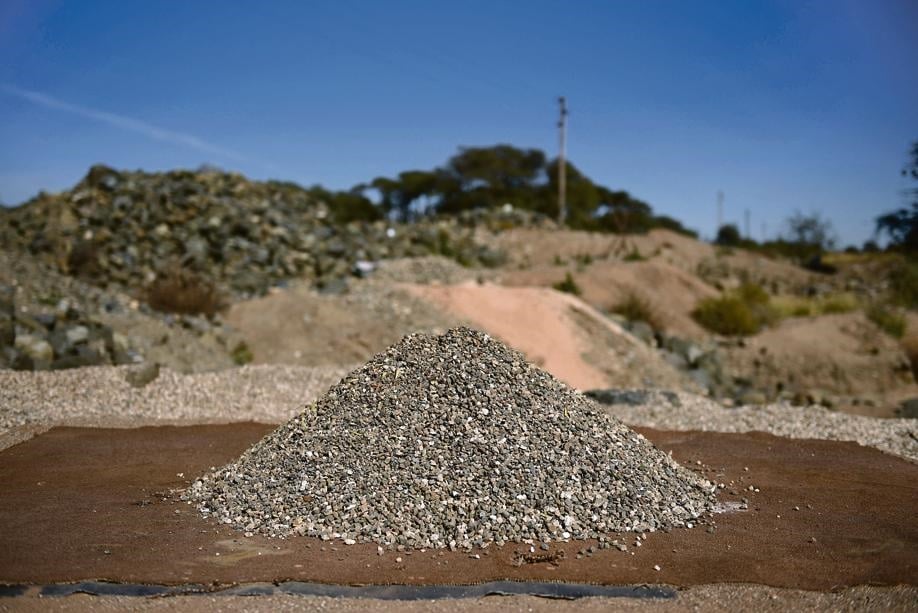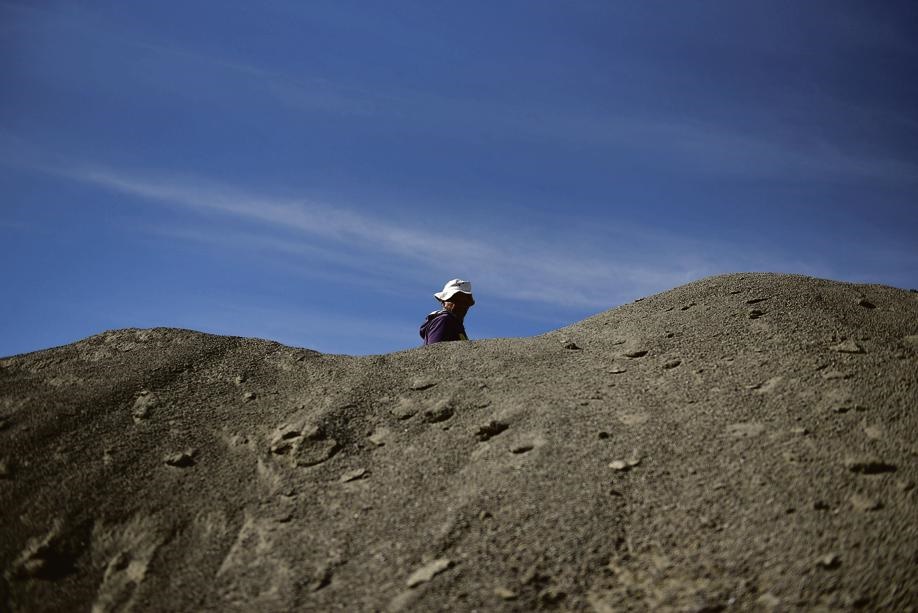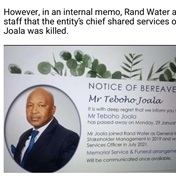
Since ‘zama zamas’ were licensed last year, a thriving mining community has been hard at work, writes Poloko Tau. Tebogo Letsie took the photographs.
They moved into a cemetery, erected shacks a few metres from the graves and started digging for diamonds.
Welcome to Kenilworth Cemetery in Kimberley, Northern Cape, where the dead live side by side with the living.
Do not be alarmed – digging happens far away from the graves.
On a wintery overcast Monday last week, a flock of low-flying flamingos could be heard honking as they flew over the cemetery towards Kamfers Dam – their known habitat and breeding ground on the other side of the N12 just outside Kimberley.
On entering the graveyard through the wide-open steel gates, graves are on the left, while shacks jostle for space on the other side.
These tiny shacks, some built of plastic, are home to many of those who have responded to what has become Kimberley’s new diamond rush.
Once inside the cemetery, as you drive past the shacks, you find a few people basking in the sun.
Further down is where they work.
From a distance, a plume of dust draws your attention to a spot where the sifting of soil is under way – people separating softer soil from pebbles in search of the precious stones.
Teams of two or more, men and women, are hard at work; digging, carrying rocky soil in buckets and sifting through it before sorting through the small rocks, hoping to find the most sought-after rough gemstone.
Those working here used to be known as zama zamas, a term used to refer to illegal miners.
But they now prefer to be called “artisan miners” after their trade was legalised last year, putting an end to years of illegal mining.
For decades, they have worked under the cover of darkness, but now they carry permits to be on site and dig for diamonds.
The site, which includes the cemetery, is known as Beefmaster. There were more than 100 miners the day City Press visited the area.
“Big mining companies used to dump lots of rocky soil dug from the mines around Kimberley here and in other areas. We’re here searching for what they have missed, and I can tell you, we’re walking on a fortune here,” says Desmond Williams, one of the artisan miners.
TEAM RASTAFARI
A footpath from the road leads to big heaps of rocks. The smell of dagga hangs in the air as we approach a tree under which four men are on a “smoke break”.
The four work together as a team. Williams is part of this team, which is proud of its Rastafarian culture.
He explains where they come from.
“For many years, we worked only at night, we were known as zama zamas and we were often arrested when caught for trespassing or illegal possession of diamonds if caught with one. It was not easy, but today we are part of the formal market where we can possess and sell diamonds,” Williams says.
“We’re not stealing from anyone … all we have always wanted was to be allowed to salvage diamonds that were thrown away.”
Williams says theirs is a “recovery process”. There are four working stations in this process.
“One will dig and the other one will move the soil from that point to the next point, where rough sifting will take place. The small rocks will then be moved to a softer sieve before moving to the next station, where one man will sit down, open their eyes really wide and sort the rocks in search of a diamond,” he says.
“Trust is very important in a team, hence we do not worry that the one sorting may hide a diamond if they find it. Patience is equally important because, at times, a month or even more can pass without finding any diamonds.”
WOMAN POWER
About 100m from the Rastafarians, 69-year-old Pulane Sehere sits behind a table with a mountain of loose rocks behind her.
Her eyes are fixed on the rocks that she is shuffling across the table a few at a time. Anything that sparkles is the only thing that will grab her attention.
This is the work that Sehere did for years with her late husband. She stopped when he died, and she moved back home to Thaba Nchu in the Free State, but returned last year when she heard her trade had been legalised.
Sehere works with her son and a family friend.
“I work on the sorting table and, whenever I come across a diamond, I pick it up and have a little conversation with it,” she says, demonstrating how she does it.
“I’d say to it softly: ‘Hey, you. Where have you been hiding? I got you now.’ Then I’d look around and hide it,” she says.
Sehere calls it “khomo ya mobu”, seSotho for “cow of the soil”, which means the wealth hidden in the soil.
Not far from her, Seitebaleng Mathonsi, a single mother of two, is sitting on the ground sorting through her stones.
“I have been doing this for three years now. From working here, I have managed to build a house and furnish it fully, and I continue to support my girls,” says Mathonsi, who is from Dry Harts near Taung, North West.
“I live in a shack here and wake up to work every day. I have managed to survive from this and my second-born girl is now studying medicine in Cuba.”
Kesetselemang Kobua, another artisan miner from Dry Harts, has formed a mother-and-son team.
“We work together and here there is no softer task for women and harder ones for men. I can dig using a shovel and pickaxe, carry buckets full of soil and sift,” she says.
THE INCOME AND PATIENCE
Most of those who dig for diamonds are reluctant to disclose how much they make.
“The money can be really good. Look around and look at all the vehicles – SUVs and others – that were bought with the proceeds of this digging,” Sehere says.
Kobua says she does not mind living in a shack in a graveyard: “I live here so that I can be close to work, but the big motivation is the money that comes out of this. It can take time before you get a diamond, but patience and knowing that my turn is coming keeps me going every day.
“I have not found a diamond this year, but I am not going to stop … I will soon come across a big one and only then will I go home, reward myself with things I have always wanted and take a little break.”
THE SILENT POLITICS AND TENSION
A cardboard placard pinned to a thorn tree close to the shacks invites people to a meeting later in the day.
“It’s not clear who is calling the meeting and what is going to be discussed. Why must I bother and get myself involved in these petty politics?” asks a man passing by.
Activist Luckyboy Seekoei has for years led the struggle to get informal diamond miners legalised.
When this was achieved, Batho Pele Co-operative was registered and permits can be obtained with the blessing of the department of mineral resources.
“We’re now at a stage where everyone wants in and everyone wants to claim victory. There are political parties that want our members to align with them when we never achieved this through any political party name,” says Seekoei.
“We have a committee that is being wrestled by third forces who want to take over the artisanal mining coordination by force. Through the process, one of our site offices was recently torched.”
Seekoei says a total of 600 hectares at four different sites was given to them for mining, but now an attempt to hijack control by people he could not name was leading to lawlessness on the sites.
“We now have tendencies of anarchy where our marshals are disrespected and threatened by those who are derailing from set rules, like those who have turned to stealing copper, fences and poles on sites awarded to us.
“We have people who are not registered with us and those who recently joined artisanal mining now questioning how we do things and making allegations they cannot substantiate in a bid to divide us,” he says.
Seekoei says there are buyers and runners – also known as middlemen – who used to control the “black market”.
They are “not happy that we’re now legalised and can have our diamonds evaluated by the Diamond Board of SA and sold in a formal market”.
“They are now losing out on commission and profits they made in the black market. These are people who we believe are involved in trying to destabilise our trade and compromise the victory,” Seekoei says.
Meanwhile, there are those who have chosen to stay out of any politics, like Ivan Bock from the Rastafari team. He says he is goal-driven.
“I can’t wait for the day we see our registered diamond company listed on the JSE. There is wealth lying here and if we can get more land to mine on, then building a new city in the Northern Cape will be possible,” he says with a lazy smile.
| |||||||||||||
| |||||||||||||




 Publications
Publications
 Partners
Partners










